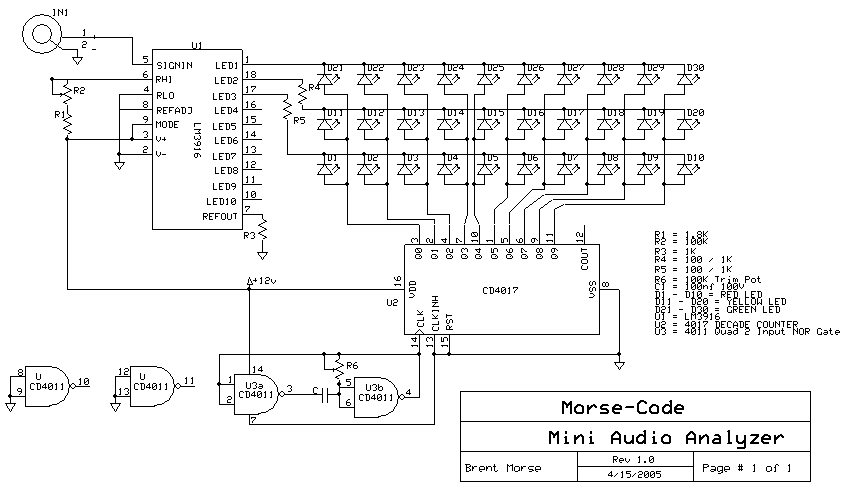Hello,
I am trying to design a LED necklace. The twist is that I am also trying to design the necklace so that the LEDs blink in response to music. I want to incorporate 16 to 20 blue and white LEDs in a pattern of: BWBWB..... ect. I found a few circuits that may help, but I'm not sure if they are practical for my purposes. http://www.electro-tech-online.com/...ync-music-sound-level-indicator-schematic.png
http://www.electro-tech-online.com/...ng-transistor-help-led_flasher_to_music-2.png
In the 1st link how would I incorportate a music input instead of a mic input. I am kind of new to electronics.
I want to power this with AAs and the music source will be a mp3 player.
Thank you for any and all help,
Scott
I am trying to design a LED necklace. The twist is that I am also trying to design the necklace so that the LEDs blink in response to music. I want to incorporate 16 to 20 blue and white LEDs in a pattern of: BWBWB..... ect. I found a few circuits that may help, but I'm not sure if they are practical for my purposes. http://www.electro-tech-online.com/...ync-music-sound-level-indicator-schematic.png
http://www.electro-tech-online.com/...ng-transistor-help-led_flasher_to_music-2.png
In the 1st link how would I incorportate a music input instead of a mic input. I am kind of new to electronics.
I want to power this with AAs and the music source will be a mp3 player.
Thank you for any and all help,
Scott









